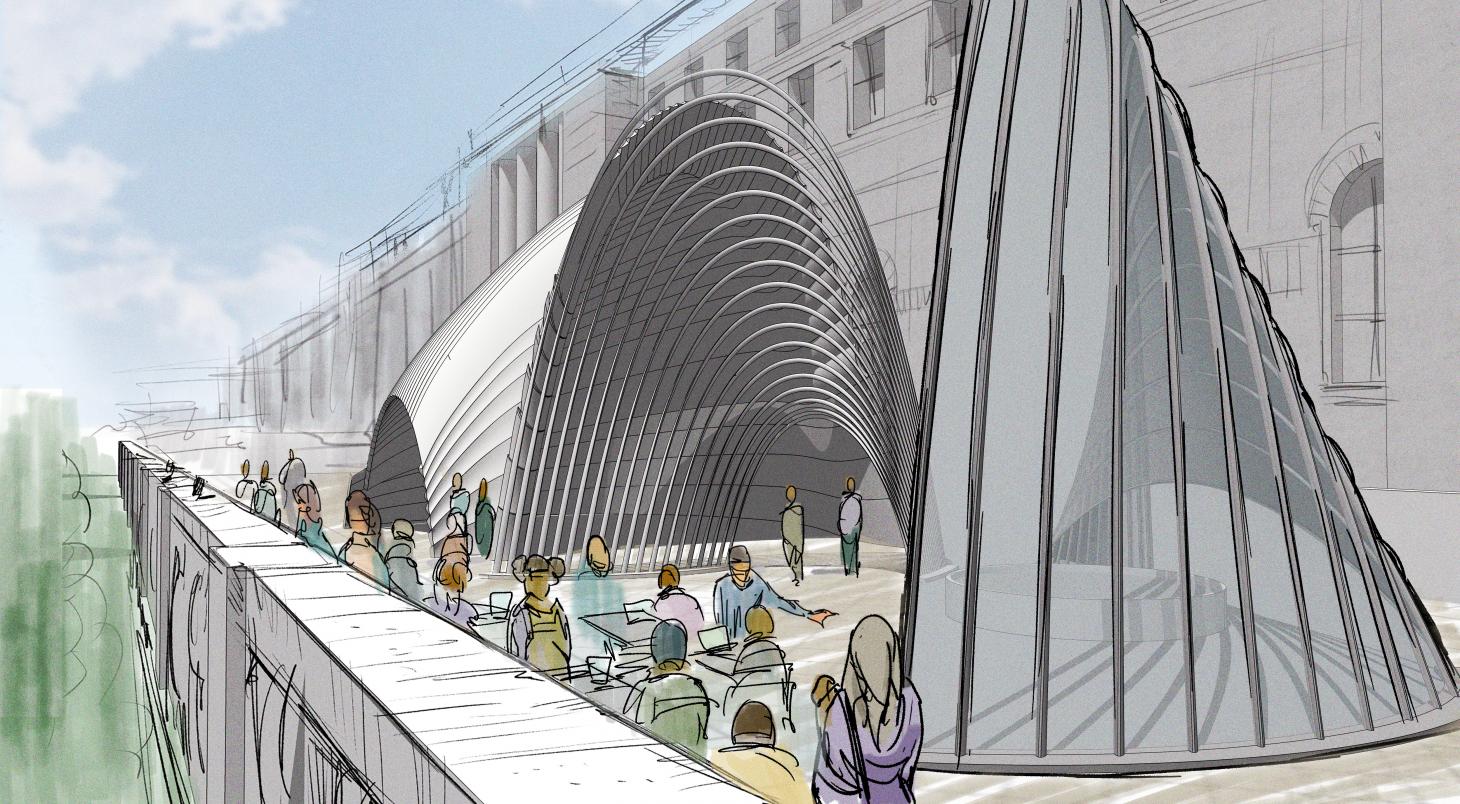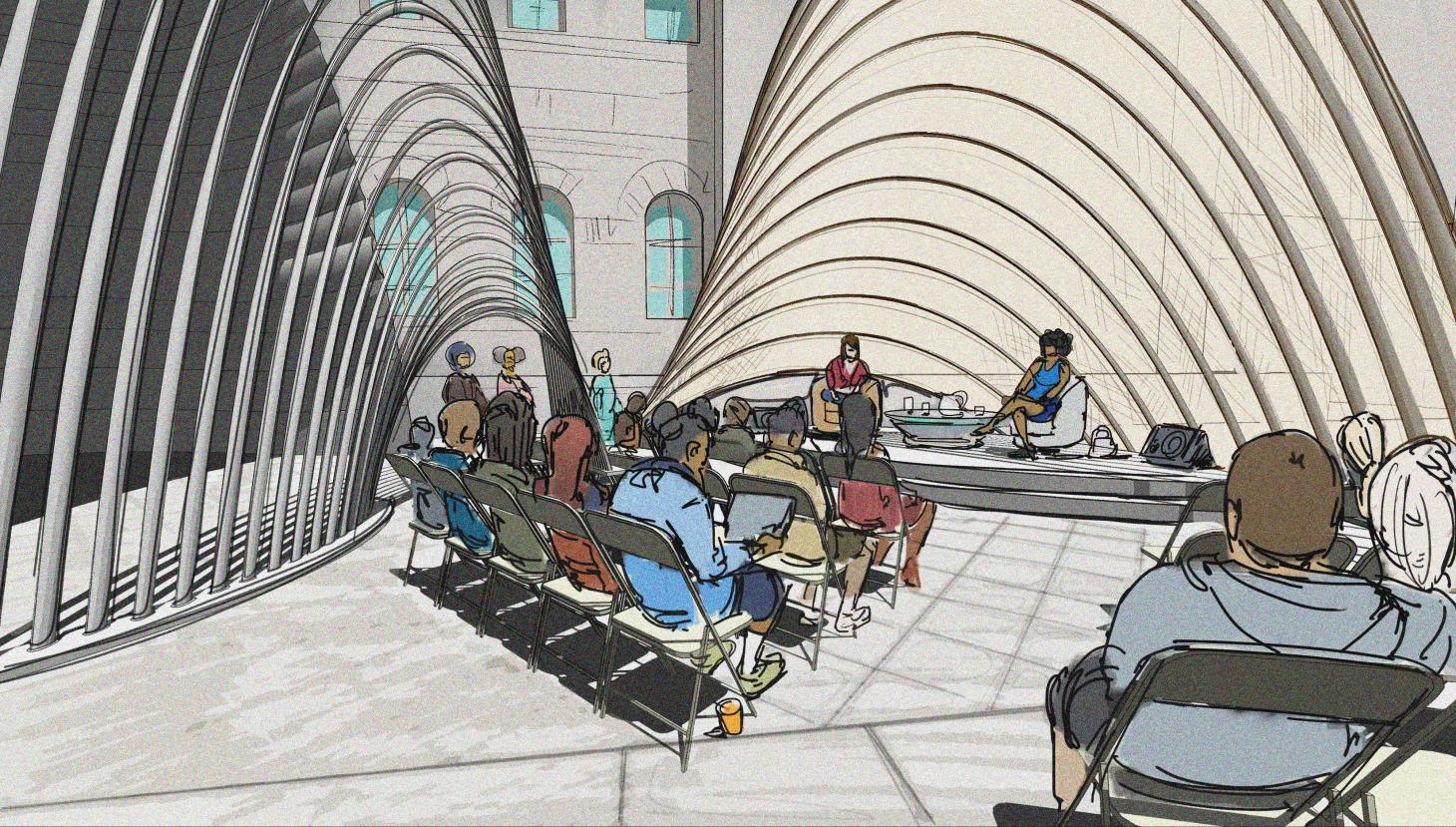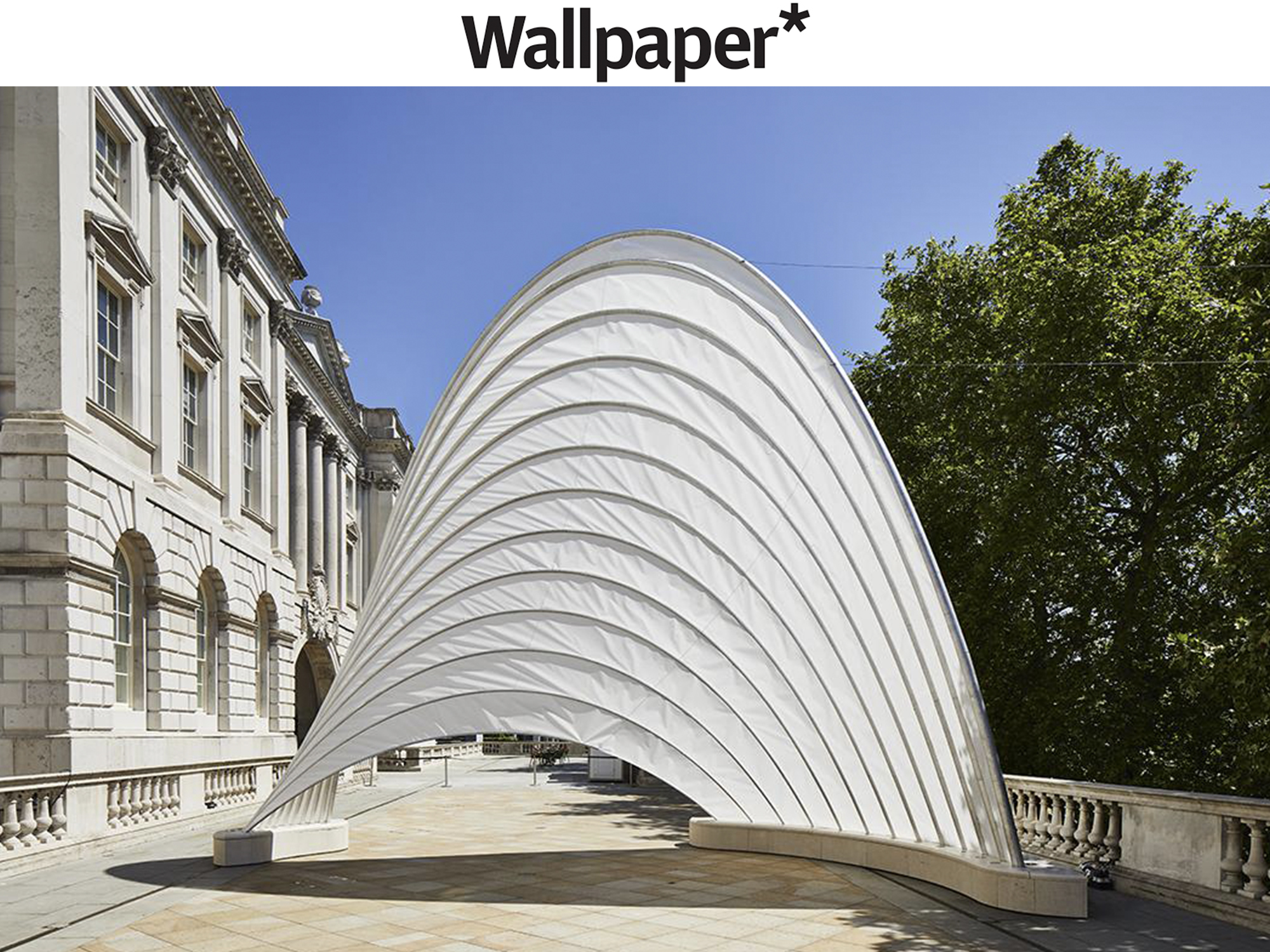By Shawn Adams
Ini Archibong’s Pavilion of the African Diaspora for the London Design Biennale comprises three sculptural structures where Black contributions will be seen, heard, and celebrated
‘We cannot continue to speak about culture and design without recognising how the African diaspora has contributed to and influenced the creative industry. Black creativity has impacted every corner of the world,’ states Ini Archibong. The American-Nigerian designer reveals his Pavilion of the African Diaspora, which is set to appear at the London Design Biennale in June 2021.
Inspired by the transatlantic slave route, the project is a monumental representation of ancestral journeys birthed through water and sound. The pavilion has been developed with Archibong’s collective studio LMNO Creative, which includes designers Jori Brown, Ebony Lerandy and Maxwell Engelmann, and comprises three sculptural volumes where Black contributions will be seen, heard, and celebrated. During the four weeks of the biennale, the architectural triptych will accommodate 12 days of talks, panel discussions and musical performances. Supported by electronic giant Logitech, the pavilion ‘embodies the rich histories and heritages of the African diaspora’, says CEO Bracken Darrell. The structures are ‘Afrofuturistic. Afro current. And are a link to the Afro past.’
Ini Archibong’s Pavilion of the African Diaspora: the design

The Shell
The first of the three forms, The Shell, is inspired by conches and cowries. These shells emit a deep and moving cry when blown, which is said to guide the soul homeward. Historically, they were used across Africa for currency and trade. Over the last year, we have seen the world debate the value of Black lives, and Archibong aims to continue this dialogue inside the freestanding structure. ‘We also hope to further understanding and to educate ourselves and others about the influences and contributions of the diaspora,’ says the Switzerland-based designer. This space will be home to a small bazaar and host an array of educational discussions for up to 100 people.
The Wave
Following the London Design Biennale’s theme of resonance, the second volume, The Wave, is a physical manifestation of frequencies. This structure is a series of catenary curves that are a nod to ibheqes – beaded adornments that traditionally hang from the necks of Zulu men. Inside, a cymatic pool generates wave patterns in response to sound made by visitors. Inspired by the Afrofuturistic vibrations of composer Sun Ra, the water body demonstrates the power of the voice through performative action. ‘It’s a form of recontextualising visiting an oracle to seek advice from distant ancestors. You go in, ask a question, then get a response that you have to interpret,’ explains Archibong. It is an architectural griot (a historian or storyteller in West African culture) and acts as a spiritual gateway that nods to Akan initiation rites. ‘There’s something about gaining the knowledge of higher understanding and then coming out anew that’s represented by crossing through a threshold,’ says Archibong.
The Sail
The final element, The Sail, ‘paradoxically represents the past and the present’, says Archibong, and is ‘imbued with the resonant and hopeful voices of the future’. It stands as a reminder of the painful manner in which Black people were torn from their motherland. The geometry is a vehicle to take the African diaspora forward and ‘looks to the future shores which we shall reach through our creative expressions’, adds the designer. ‘Our voices are propelling us into the future and powering the sail.’ This structure, evoking reverberant sound waves passing a billowing sail, will act as a backdrop for events and performances.
An arena of culture and identity

The pavilion seeks to provide a platform on the global stage that will honour African contributions and celebrate the Black community. ‘Anchored in history, the pavilion aims to serve as a space to tell our stories and to envision a future where our voices are recognised and respected,’ says Archibong. It will be an arena of culture and identity that starts outside London’s Somerset House and then travels the globe until 2023. ‘We are recreating the same mythologies through the context of the world that we’re living in today,’ says Archibong. The structures will open up a dialogue, bring an opportunity for recognition and provide an invitation to African heritage. ‘We are children of the diaspora and it is time that we are heard.’










